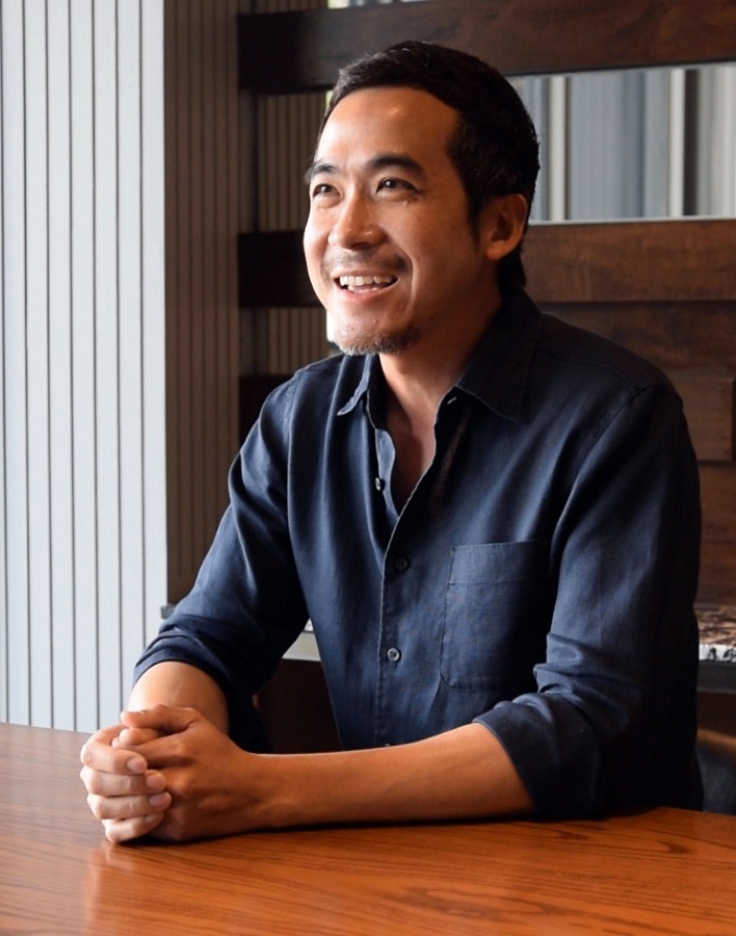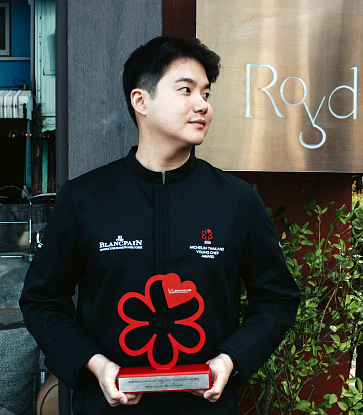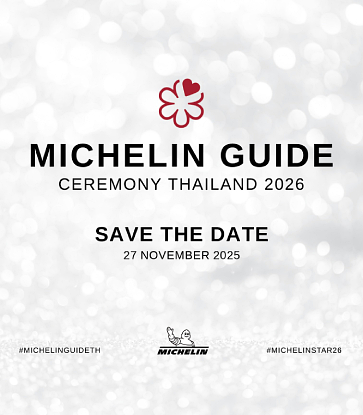Parisians and Londoners might disagree, but it's easily argued that New York stands as the world’s greatest dining city. Senegalese stews? Uzbek kebabs? Yemeni coffee? No problem.
So it is only natural that Thailand is well-represented, with 11 Thai restaurants listed in the New York edition of the MICHELIN Guide, representing all four major regions of Thailand, ranging from traditionalist establishments aimed squarely at the immigrant community in the Thai business enclave in Elmhurst to trendy dining destinations in endlessly culinarily inventive Lower Manhattan.
The story of how Thai food became a fixture of the American dining scene is far too long to tell here – a combination of entrepreneurial migrants, soft-power initiatives, mass tourism, the rise of the bohemian bourgeoisie, and, most importantly, quality cuisine – so it might be best to look at just two Thai restaurants, one hewing closely to regionality and tradition, and one proudly pushing boundaries.

The Diplomats: Somtum Der
Somtum Der is a name known as well in Bangkok as it is in New York. Their MICHELIN-listed original location in Silom—Bangkok’s financial district by day and a gay nightlife Mecca by evening—has been operating for a decade. The restaurant's stated goal is to deliver specifically Isan flavours to a clientele of native Bangkokians and tourists from around the world. Expanding their reach, they now have locations in three other countries, with a branch in Manhattan’s East Village, Somtum Der, also earning a MICHELIN Guide listing, and even a MICHELIN Star back in 2015. How has their experience been while engaging in this same culinary diplomacy on a grander scale?“We only go abroad if we are sure we can make the food as similar to the original as possible,” says owner Tatchai Nakapan, who has overseen the franchising out of his brand, and worked closely with chefs to make sure the flavours overseas match those in the heart of Bangkok.
“Before opening a branch, we have to make a trip, with me, or maybe me and my partner, and a chef, to go to that city, and set up a kitchen… We try their local ingredients, to see if it’s doable, to see if it’s up to our standards. And we try to adjust that recipe to make sure it’s as good as possible. For example, the papaya… In New York, they have papaya, but it’s imported from Mexico, and Mexican papaya is very different from Thai papaya. It’s a little bit watery, so we need to find a way to make the ingredient more Thai.”
“Their positive feedback, like 'Wow, this is like Thailand,' sparked word-of-mouth recommendations.”

Yet, even if the flavours match those in Bangkok, it's not always enough to ensure the brand's fidelity. The menu must be adjusted to meet local standards. As Nakapan highlighted, the Japanese market anticipated khao man kai (Thai chicken rice) at a Thai restaurant, despite the notion being perplexing at an Isan eatery for most Thai consumers. This localisation extends prominently to promotions, encompassing variations in menu layouts, preferred media channels, and promotional offerings across different locations.
RELEVANT: How Two Alain Ducasse-trained Chefs from Bangkok Are Making Their Mark in LA
However, in many aspects, it was the New York location, unlike other branches, that presented the least challenges. This was evident in terms of ingredient availability (expected in such a cosmopolitan city) and a thriving market. When Nakapan was questioned about the East Village, he expressed, "It’s a neighbourhood teeming with excellent yet affordable food options, making it an ideal fit for us. Additionally, there's a sizable Thai population in New York. So, when we opened the restaurant, it initially attracted Thai patrons. Their positive feedback, like 'Wow, this is like Thailand,' sparked word-of-mouth recommendations."
This, perhaps, is how food of any ethnic background becomes fixed in the American consciousness. First, the immigrants and their families come for a taste of home, and then the American public, of all ethnic backgrounds, follows suit. And Somtum Der is a prime example of a restaurant that seems likely to succeed, rigorously in line with the flavours of the old country (blessings upon anyone who champions met krathin but deliberately welcoming to the entire world.

The Renegades: Thai Diner
In the heart of Lower Manhattan’s Nolita neighbourhood, the 2023 MICHELIN Bib Gourmand laureate Thai Diner represents the latest iteration of a long-time culinary project. Run by the husband-and-wife team of Ubon Ratchathani-born Ann Redding and Long Island-born Matt Danzer, Thai Diner is the latest iteration of a long-term collaboration between the two, who met in the kitchen of Per Se, Thomas Keller’s famed three MICHELIN Star venue. Start by looking at the décor, which could easily be found at a late-night hipster dive bar in Bangkok, right down to the posters for goofy ‘80s Thai action comedies. That speaks to the profile of their food – front-loading Thai flavours, but with a cosmopolitan and playful attitude. Think Thai tea French toast made from babka, the sweet bread of Eastern European Jewish origin that has become a New York staple, or their interpretation of pu phat phong karee, in which the crab is substituted with crab cakes served with a curry-powder and salted egg-yolk sauce, somehow evoking the beaches of both the Gulf of Thailand and the Hamptons.“Fusion was for a very long time a bad word… now it’s cool again,” Redding says. “For many years people have just been killing the word authentic, it drives me absolutely bonkers, as if ‘authentic’ is synonymous with ‘good.’”
Danzer agrees, “We still try to pay respect to the original dish, the original flavour profile, and then we might get more playful with the presentation or the protein or something like that. We don’t want to bastardise anything, it should still make sense, it should still be delicious, and it should still take you back to that original dish… Flavour trumps everything. If somebody sits down and it’s delicious, at that point it’s irrelevant. Who cares if it’s authentic? Is it delicious? Did you enjoy it? Would you come back for it? And I think that’s really the most important thing for us.”
Which is an increasingly important point of distinction in the cutthroat dining world of the Big Apple. With the sheer number of Thai restaurants, it can be hard for anyone to stand out, and so breaking the apparent rules of Thai cuisine provides one means of doing so.
Redding points out that this letting go was critical, or as she put it “giving ourselves permission and not feeling like we had these rules. We have som tam but we do ours very differently, we don’t use a krok… we decided to take the approach of making it more of a fresh salad.”
“It drives me absolutely bonkers, as if ‘authentic’ is synonymous with ‘good.’”

To Bangkokian readers, this might sound like heresy. And to that end, Redding says, 'When I see an older Thai lady, I’m terrified, because it just makes me think of my mom telling me I’m doing it wrong… Her last visit was the first time she said, ‘This is good!’ Normally, it’s, ‘This isn’t how we do it.’ She speaks for the entire Thai community… ‘We,’ this is not what ‘we’ do…
Danzer smiles in agreement. “Her famous move is she’ll come here, we’ll have a dish, and we’ll come home after work and she’ll have gone to Chinatown, shopped for the same ingredients for us to show us the right way… that cuts deep.”
But despite the quibbles of Thai aunties, they have found their success. As Redding puts it, “It’s New York, everyone has an opinion, we love you, we hate you. But for the most part, what we’re really focused on is being proud of what we’re doing.”
Perhaps it’s best not to think of Thai Diner as a representation of Thailand. On the contrary, it is a step forward, a piece of evidence that now that Thai food has cemented itself in the American consciousness – following in the steps of countless arrivals from other myriad nations – it is on its way to developing a new identity on the other side of the Pacific.
Culinary-minded visitors typically have a checklist of places to go and things to eat in New York, places familiar to the entire world through Seinfeld or Sex and the City, emporiums of bagels and delightfully greasy pizza by the slice, pastrami sandwiches, and dirty-water hot dogs. But in a city that big and diverse, there is so much more. Alongside those old New York staples, inherited from the countless waves of immigrants that found themselves newly arrived, whether at Ellis Island or JFK Airport, it is perhaps Thai food that is some of the most exciting. In Lower Manhattan, in the old tenement neighbourhoods below 14th Street, a Thai dining scene that’s – almost – as exciting as Bangkok’s is on the rise.
Illustration image: © Somtum Der, Jason Rothenberg, Alex Muccili/ Thai Diner





















